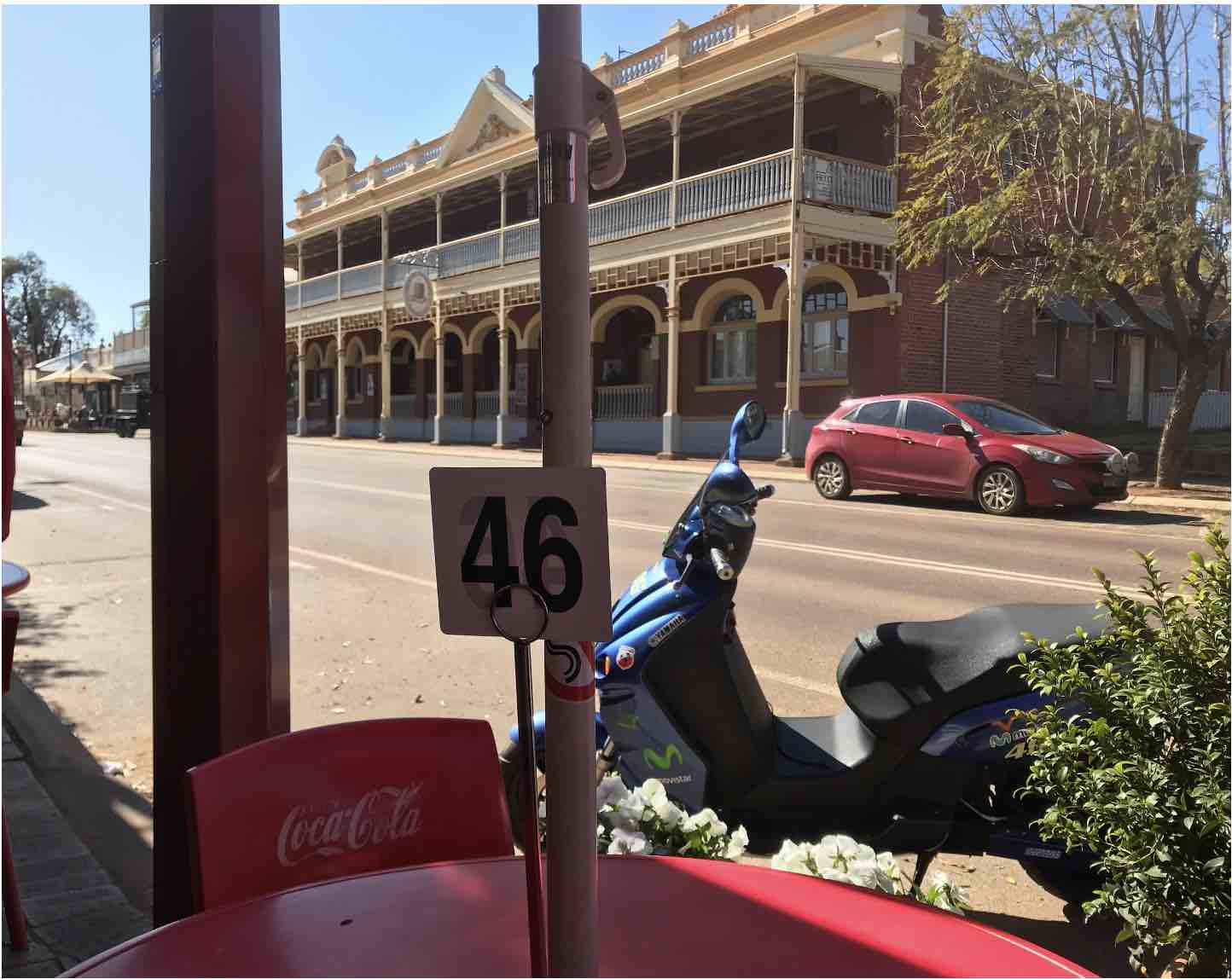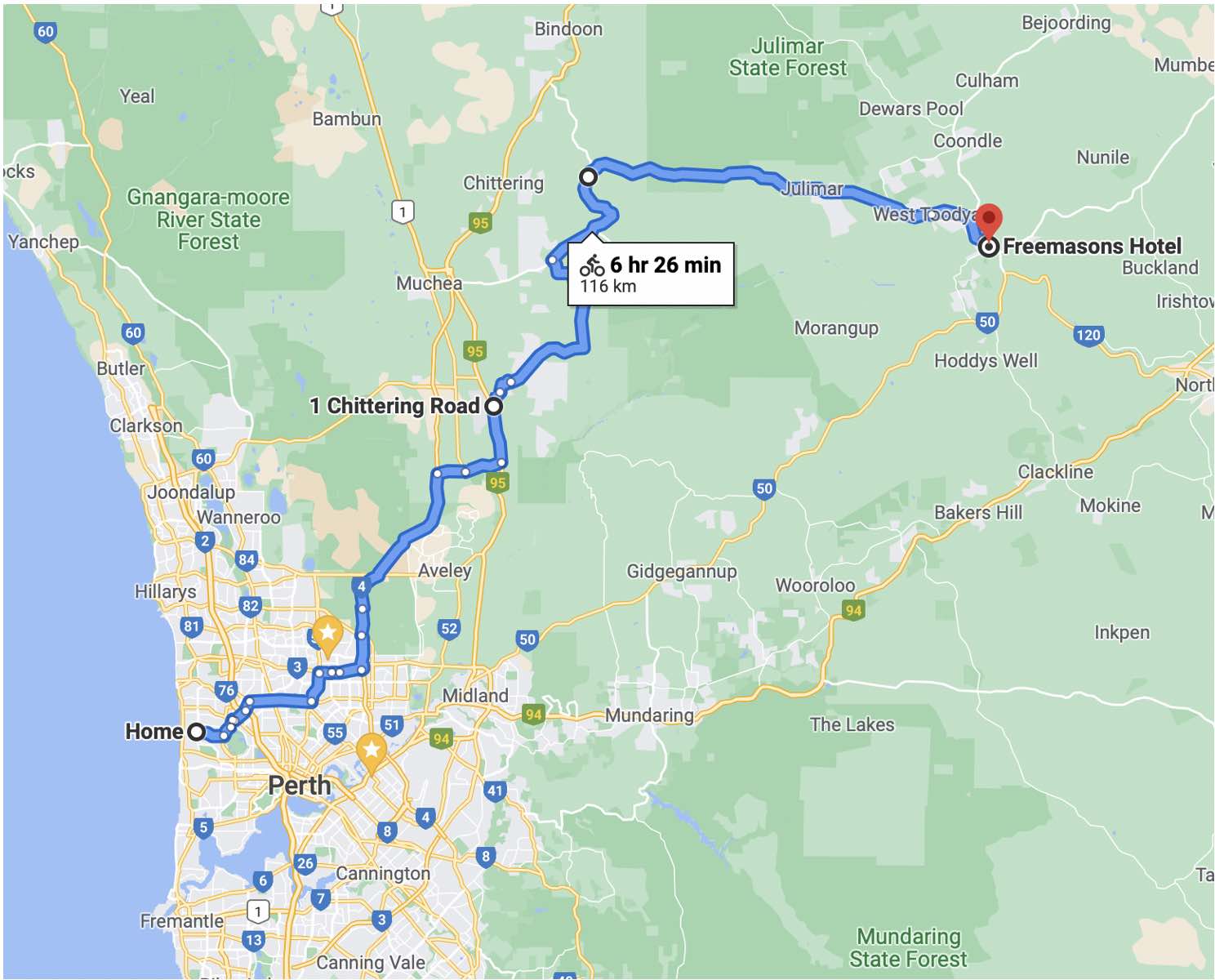The bike
The bike is an 2011 Vmoto emax 110S. The original price was $4,000 and it had a range of 60km on its original lead-acid batteries. I bought it for $2,000 second hand from the original owner, who had converted it to LiFePO4 cells.
These new batteries are considerably lighter and have higher capacity, increasing the range to about 100km. It is rated as a 50cc moped in my state, so can be driven on a car licence. The bike was subsequently offered with the LiFePO4 conversion for $6,000.
My 25A charger takes about 1.5kW (6A) from the 240V supply, so can be used on a standard 10A socket anywhere in Australia. It takes about 5 hours to charge the battery completely, but I normally only have to charge for about an hour since I only typically use a maximum of 20% per day in normal use.
I tend to wait for a sunny day, so that I can charge “for free” from my solar panels. So I may leave it a few days if the sun is not shining. The cost of a full charge is about 35c if I use my solar panels (because I get paid 7c/kWh when I export it) versus about $1.50 using grid power. Being retired, I am usually about during the day, but for those that still have to work, they may have to use grid power overnight.
The trip:
A popular spot to travel to from Perth is the sleepy country town of Toodyay, located in the hills about 100km East of Perth. I regularly take a drive there on my “real” petrol motorcycle, or in the car.
The overall distance from my house to Toodyay, according to Google Maps, is 96km, but this involved riding along a busy highway. I opted instead to take my VMoto electric moped along the scenic route through the Chittering Valley, a total distance of 116km.
I did some calculations to estimate the range, accounting for variables such as wind and hills. I waited for a Sunday afternoon with favourable conditions (light winds and sunny) and set off about 2 pm.
In order to make sure that I got to my destination, I kept the speed to about 60kph by leaving the power option on “medium”. It was absolutely delightful travelling through the countryside at a leisurely pace in total silence! The roads were quiet, and the sun was shining!
I had arranged for my wife to follow a bit later in the “back-up” vehicle. She was carrying my old battery pack and a 48V to 240V inverter. This would have enabled me to plug my charger into the inverter to charge my battery enough to get to my destination.
This is the route (courtesy Google Maps):
This is the elevation profile:
I arrived at the hotel before my wife caught me up, so checked into the hotel and plugged the bike into a 10A socket in the laundry, accessible from the back of the hotel, using an extension lead. I then proceeded to the bar for a celebration drink!
The next morning, after a nice meal and stay at the hotel, we had breakfast before heading back home. It was a Monday morning and the traffic was very light. I had arrived in Toodyay with 22% charge remaining after 118km, so I estimated my range to be about 150km.
On the way home, I decided to make a few detours and also ride a bit faster. The result was that I travelled 135km with 8% charge remaining.

More details about the bike:
The original weight was 91kg, plus 100kg for the lead-acid batteries! The new battery weight is 32kg, giving an all-up weight of approximately 123kg, versus the original 191kg. This has made it sprightlier and more able to climb hills.
The bike features a 4kW brushless DC hub motor set in the rear wheel. It has 4 driving modes: Eco, Normal, Max, and Reverse (!), with corresponding top speeds of 45, 60, 75 and -3 kph respectively.
It also has moderate regen braking, but this does not slow the vehicle very quickly. I try and anticipate the need to slow down to minimise energy loss using the brakes.
The design is very modern and has similar features to a Ducati motorcycle! Twin stacked movie projectors style headlights, motorcycle forks, disc brakes, etc. Mine is adorned with Valentino Rossi stickers (46) since he is my hero motorcycle champion.
I have had the bike about 4 years, and, due to the range steadily reducing to about 50km, I recently replaced the battery pack with 16 x 3.2V 105Ah LiFePO4 cells. These were lighter and had more capacity than the old ones and cost about $1,500 delivered.
I also updated the Battery Management System (BMS) to provide better balancing of cells and remote monitoring of charge status on my mobile phone app via Bluetooth. The range increased to approximately 130km riding around town and keeping up with the general traffic. I therefore wondered whether I could travel further distances.
My Conclusion:
The take-up of electric cars has been slow in Australia. This is probably due to the relatively high purchase price, range anxiety and lack of government incentives.
However, I think there would be a market for cheaper vehicles that are principally used for commuting, and maybe a second vehicle or hire car for longer trips. Personally, I think a PHEV is a good option in Australia.
Electric-assisted bicycles are quite popular. However, I am fit enough to be able to ride a normal bicycle, which I regularly use for fitness.
The electric motorbike option is the best option for me. Whilst it does not offer the crash protection, weather protection or carrying capacity of a car, it is great fun, practical and cheap.
Being a step-through is offers some weather protection and side crash protection. It also has luggage storage under the seat and in the footwell. I used it the other day to transport 2 x 20kg bays of builder’s sand!
There are larger and more sexy motorcycles available, but the relatively high wind resistance on a bike means that high speed dramatically reduces range. They also are heavy and expensive.
Sadly, my electric moped is no longer made. It was a bit of a sales disaster with only about 100 sold in Australia. I think this was due to the weight of the lead-acid batteries and poor overall performance, plus the relatively high cost compared to a petrol 50cc bike.
However, I reckon mine is a great compromise for general commuting and poodling about. Along with other manufacturers, Vmoto still make a great range of small electric motorcycles and scooters under the Super Soco range. They now all have modern batteries and good overall performance.
It’s interesting that I own several ICE powers cars and “real” motorcycles, but the little electric bike is my favourite means of transport and costs almost nothing to run and produces no pollution.
Clive (Batty) Rawson is a retired engineer.



